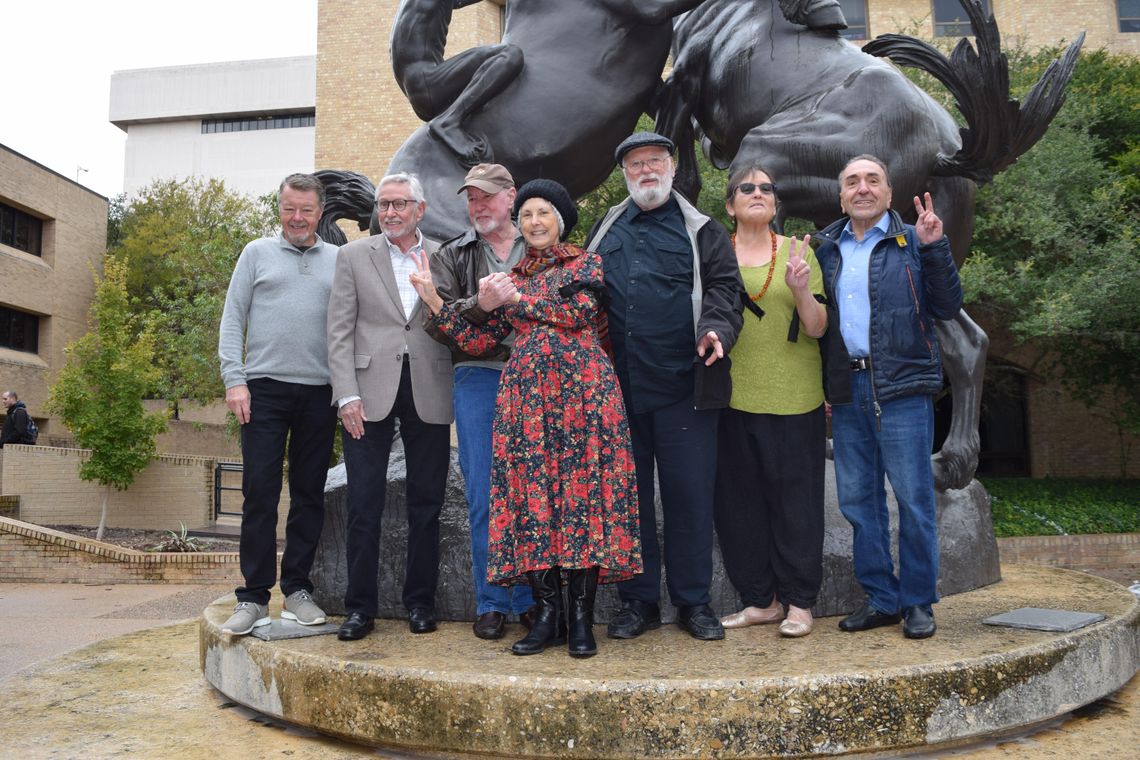On Nov. 13, 1969, a group of students at Southwest Texas State University — now known as Texas State University — staged an anti-war protest in front of the Stallions statue on campus. They sat quiet with crossed legs, some wearing black armbands, some carrying signs. They didn’t scream, they didn’t form a line or chant. But before the day ended, 10 students would be suspended, their course credits erased, and the grounds for a court case that would go all the way to the Supreme Court would be laid.
These 10 went on to be known as the San Marcos 10. And Wednesday marked the 50 year anniversary of the protest that brought them all together.
On Nov. 12, 1969, news of the My Lai Massacre, considered one of the most horrific incidents of violence committed against unarmed civilians during the Vietnam War, had broken and Americans at home were seeing images of the brutal aftermath flash across their television screens.








